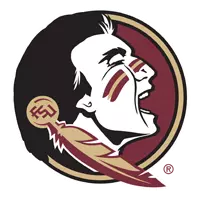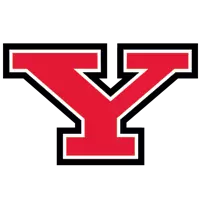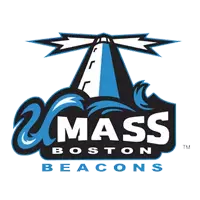University of Massachusets Athletics
Athletic Department Honored
Athletic Department Honored
 The U.S. News & World Report honored UMass as one of the top 20 athletic programs in the nation. |
In the March 18, 2002, issue of U.S. News & World Report, the University of Massachusetts athletic program was ranked as one of the top 20 in the nation, based on four areas of achievement used by the publication. The rankings were part of the magazine's first annual "America's Best College Sports Programs" feature, which took a broad view of intercollegiate varsity sports programs.
"This is a tremendous honor for our entire athletic program, and is a great tribute to the hard work and dedication of our student-athletes and coaches," UMass athletic director Bob Marcum. "Our entire program is about more than winning, and we are committed to providing the best experience possible for our student-athletes and coaches, both academically and athletically. The resources provided by the University have played a vital role in our academic and athletic success over the years."
In addition to UMass, the schools recognized by U.S. News & World Report were Boston College, Brown, Connecticut, Cornell, Dartmouth, Duke, Georgetown, Harvard, Hawaii, Illinois, Lehigh, Maryland, Michigan, New Hampshire, Penn State, Princeton, Stanford, Utah and Villanova. The schools were ranked alphabetically by the magazine.
Nearly half (nine) of the 20 schools on the list sponsor Division I-A football and play in Bowl Championship Series conferences. UMass was the only member of the Atlantic 10 Conference to be honored, and has won the A-10 Commissioner's Cup as the league's top all-around athletic program in five of the last seven years, including the 2000-2001 academic year.
The four criteria considered for selection to the Honor Roll were gender equity, graduation rates, number of sports offered and win-loss record. In addition, schools were penalized if they were found guilty of major NCAA infractions during the last 10 years.
All 321 NCAA Division I colleges were surveyed for the 2000-01 academic year. Data were collected in early 2002 for the year ended June 30, 2001.
According to the magazine, here is some of the information on data that was used to develop each of the categories used in the Honor Roll:
* Sanctions: The magazine measured how many "major infractions" an institution was assessed by the NCAA from Feb. 1, 1992 through March 4, 2002, and whether the school was on NCAA probation as of March 4, 2002. This information was gathered from the NCAA web site.
* Gender Equity: Using data from the Equity in Athletics Disclosure Act (EADA), the component measures a school's progress toward providing equal opportunities for women. The EADA report collects financial and statistical information on men's and women's sports.
* Win/Loss: Two factors determined the school's record in this category. One was the overall winning percentage calculated for all men's and women's school-to-school contests, like football, soccer, baseball, basketball, etc. The second was the school's ranking in NCAA championships in sports such as swimming and diving, track and field and gymnastics, events which were dominated by individuals.
* Sport Sponsorship: Simply put, the number of sports sponsored by the institution. Harvard sponsors the nation's largest athletic program, with 41 sports.
* Graduation Rate: Two factors determined the rankings for this category. The first was the student athlete graduation rate over a six-year period, from the NCAA's web site. The second compared that rate for the class entering in 1994 with the overall student body.
More information on the U.S. News & World Report study of intercollegiate athletics can be found on the internet at: U.S. News & World Report.
"This is a tremendous honor for our entire athletic program, and is a great tribute to the hard work and dedication of our student-athletes and coaches," UMass athletic director Bob Marcum. "Our entire program is about more than winning, and we are committed to providing the best experience possible for our student-athletes and coaches, both academically and athletically. The resources provided by the University have played a vital role in our academic and athletic success over the years."
In addition to UMass, the schools recognized by U.S. News & World Report were Boston College, Brown, Connecticut, Cornell, Dartmouth, Duke, Georgetown, Harvard, Hawaii, Illinois, Lehigh, Maryland, Michigan, New Hampshire, Penn State, Princeton, Stanford, Utah and Villanova. The schools were ranked alphabetically by the magazine.
Nearly half (nine) of the 20 schools on the list sponsor Division I-A football and play in Bowl Championship Series conferences. UMass was the only member of the Atlantic 10 Conference to be honored, and has won the A-10 Commissioner's Cup as the league's top all-around athletic program in five of the last seven years, including the 2000-2001 academic year.
The four criteria considered for selection to the Honor Roll were gender equity, graduation rates, number of sports offered and win-loss record. In addition, schools were penalized if they were found guilty of major NCAA infractions during the last 10 years.
All 321 NCAA Division I colleges were surveyed for the 2000-01 academic year. Data were collected in early 2002 for the year ended June 30, 2001.
According to the magazine, here is some of the information on data that was used to develop each of the categories used in the Honor Roll:
* Sanctions: The magazine measured how many "major infractions" an institution was assessed by the NCAA from Feb. 1, 1992 through March 4, 2002, and whether the school was on NCAA probation as of March 4, 2002. This information was gathered from the NCAA web site.
* Gender Equity: Using data from the Equity in Athletics Disclosure Act (EADA), the component measures a school's progress toward providing equal opportunities for women. The EADA report collects financial and statistical information on men's and women's sports.
* Win/Loss: Two factors determined the school's record in this category. One was the overall winning percentage calculated for all men's and women's school-to-school contests, like football, soccer, baseball, basketball, etc. The second was the school's ranking in NCAA championships in sports such as swimming and diving, track and field and gymnastics, events which were dominated by individuals.
* Sport Sponsorship: Simply put, the number of sports sponsored by the institution. Harvard sponsors the nation's largest athletic program, with 41 sports.
* Graduation Rate: Two factors determined the rankings for this category. The first was the student athlete graduation rate over a six-year period, from the NCAA's web site. The second compared that rate for the class entering in 1994 with the overall student body.
More information on the U.S. News & World Report study of intercollegiate athletics can be found on the internet at: U.S. News & World Report.







